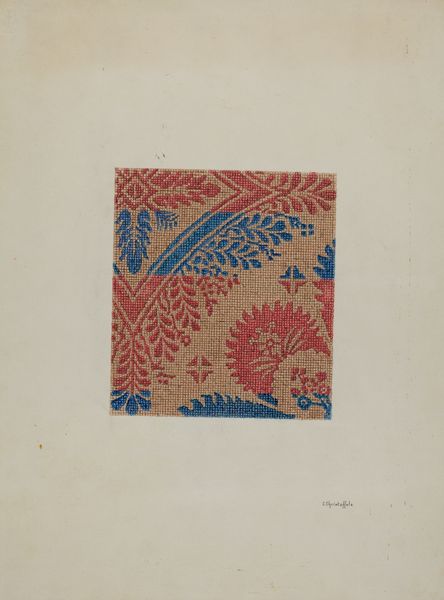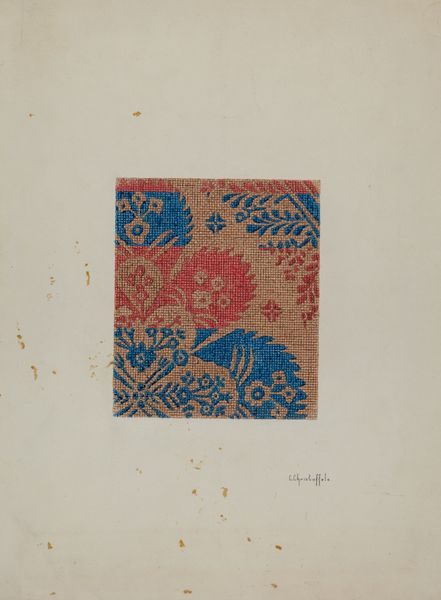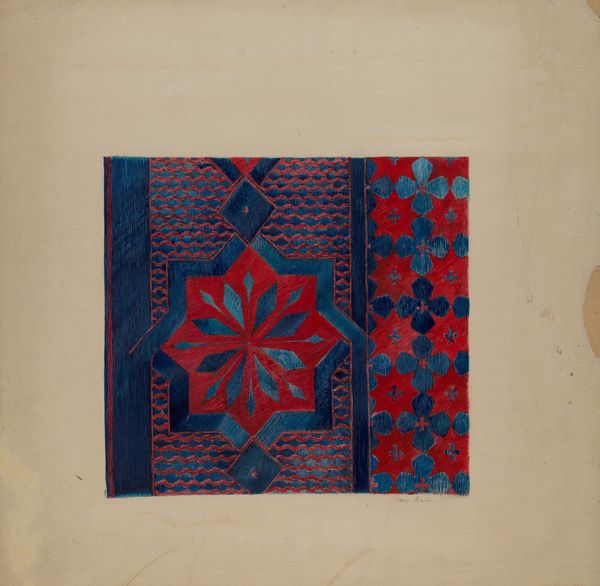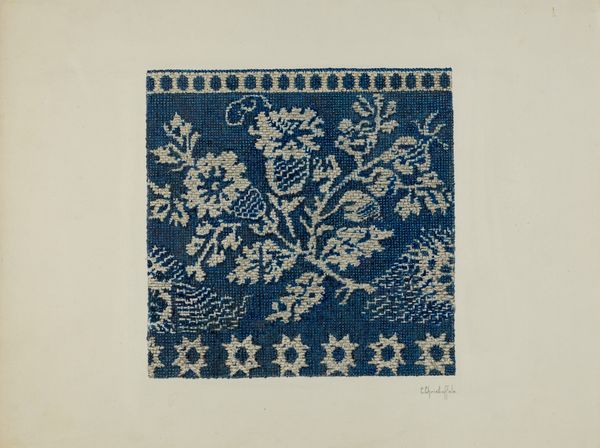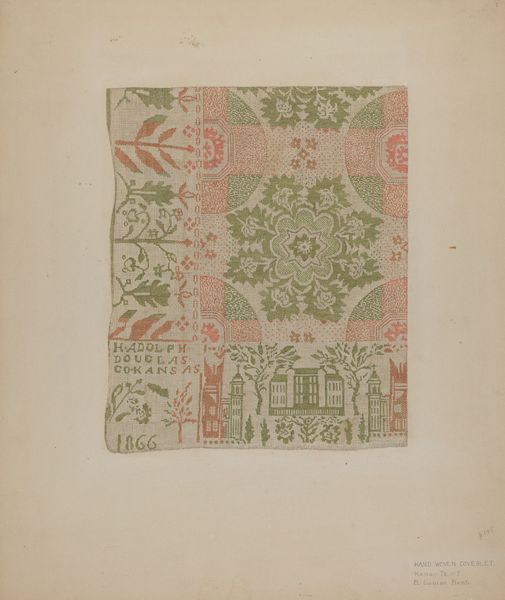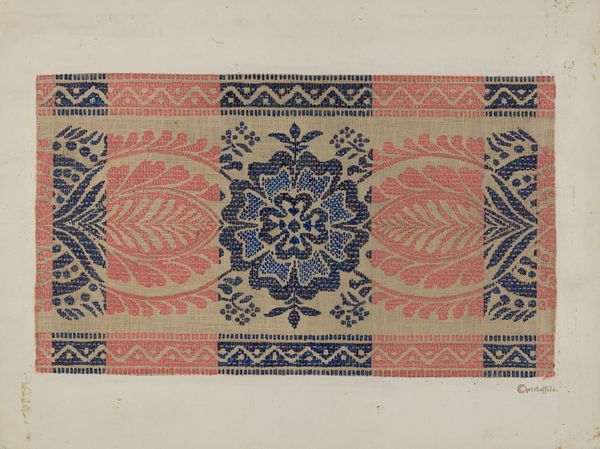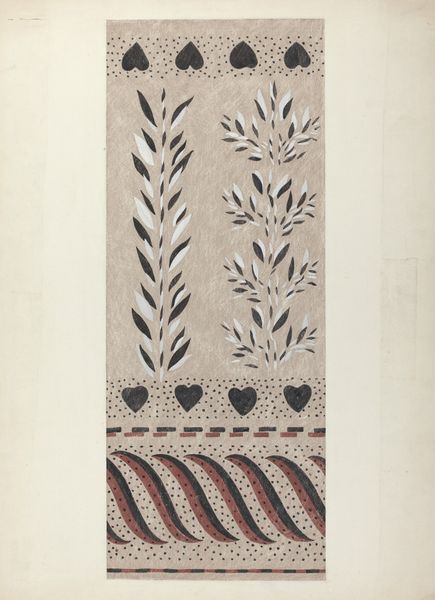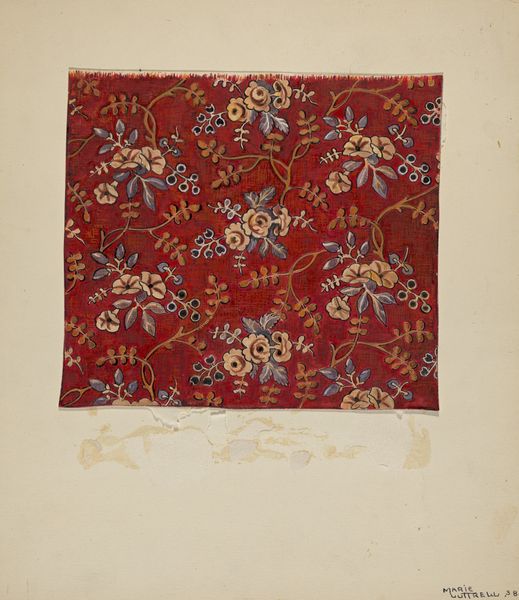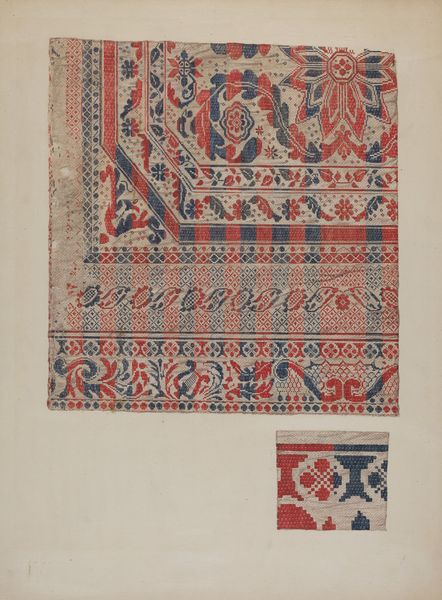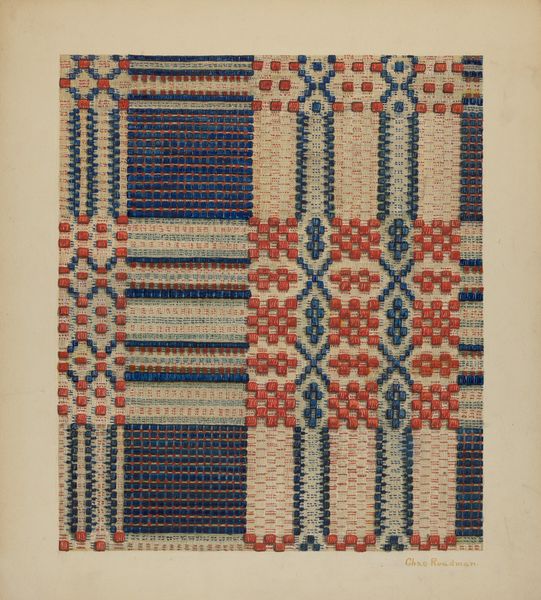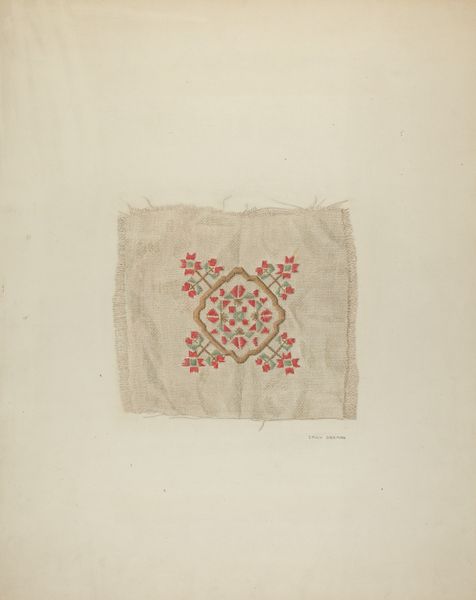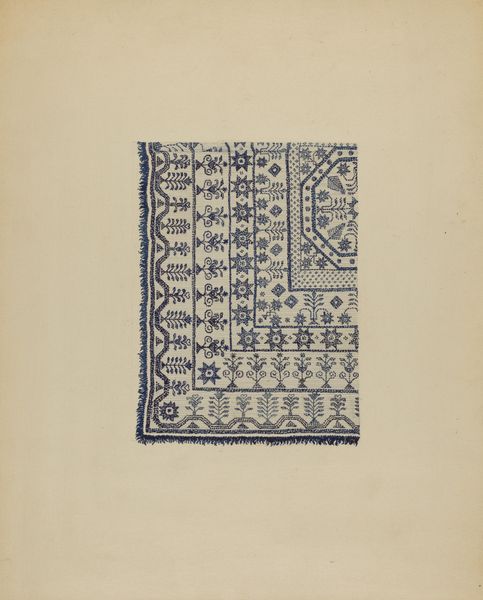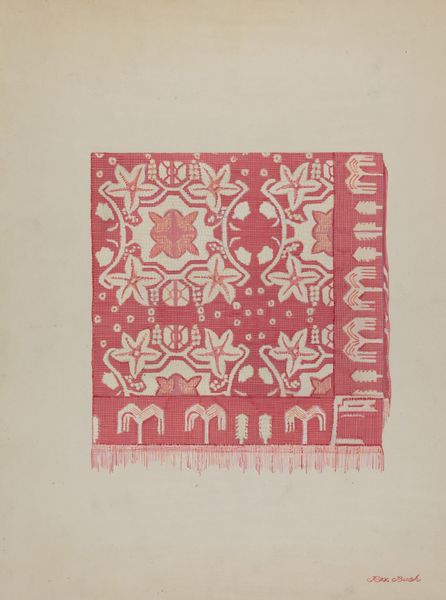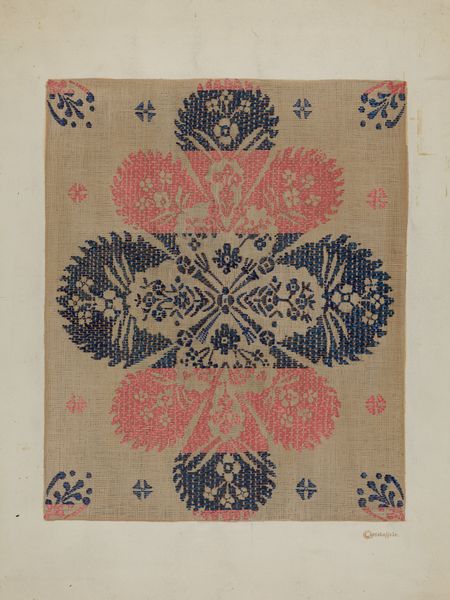
drawing, coloured-pencil, textile
#
drawing
#
coloured-pencil
#
water colours
#
textile
#
coloured pencil
#
folk-art
Dimensions: overall: 35.7 x 26.3 cm (14 1/16 x 10 3/8 in.)
Copyright: National Gallery of Art: CC0 1.0
Curator: Let's discuss this work, "Coverlet," a coloured-pencil drawing by Cornelius Christoffels, likely from around 1940, depicting a section of textile design. What’s your first impression? Editor: It strikes me as painstaking. Look at that meticulous rendering of texture. Each little square suggests a woven fiber. The colours too—the restrained palette of blues and reds layered onto this woven base suggests limitations, constraints on the means of production perhaps? Curator: Indeed, this piece gives insight into the artist's world. This was likely produced for a project with the Index of American Design, part of the WPA program. These drawings served to document and preserve examples of American material culture, particularly folk art and crafts. The purpose was very public: To celebrate and preserve a particular vision of American creativity for a broad audience during hard times. Editor: So, the drawing is not simply a visual record, but a mediated interpretation, part of a larger government project designed to valorize certain kinds of labor and production? It makes me think about the real coverlets that were produced and used at that time and place. I would love to know the details of their manufacture—the availability of dyes, the weaving techniques employed. Curator: Absolutely, and we can think about the cultural values at play here. Folk art was often seen as an authentic expression of "the people," untainted by commercialism or mass production. The Index served to promote that idea of an inherent and simple form of creative endeavor tied closely to notions of a traditional life. Editor: The fact that it’s rendered in coloured pencil complicates this further for me. It creates a kind of translation— a handcrafted design being rendered in a hand-made copy. Does that distance reinforce or undermine that sense of ‘authenticity’? I keep thinking about the maker, Christoffels, here translating another maker’s labour. Curator: A worthwhile paradox to note, the hand-made quality here is really in service of a larger project of national identity and the support of arts related professions at the time, which might be said to undermine its own stated project. It brings to the fore how objects can mean different things at different moments. Editor: Exactly. And it reminds us to keep digging into the materials, processes, and the human labour that shapes both the original textile and its representation in this striking image.
Comments
No comments
Be the first to comment and join the conversation on the ultimate creative platform.
